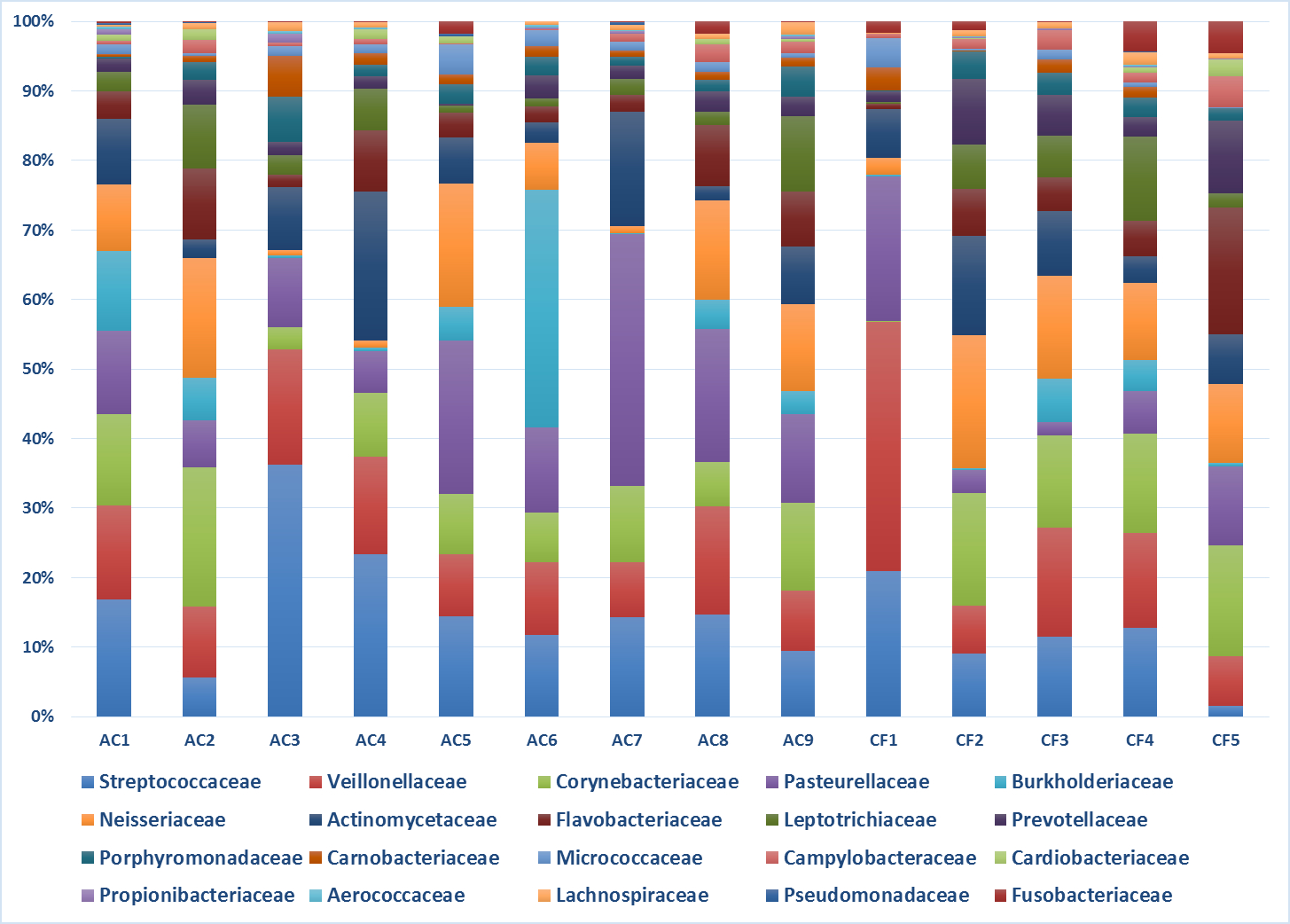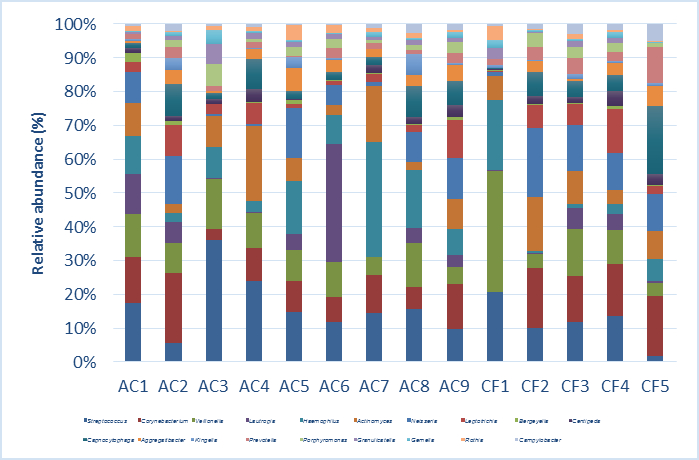IADR Abstract Archives
16S rRNA gene-sequencing of sound and cariogenic dental biofilm microbioma.
Objectives: The objective: of the present study was to identify and compare the microbiomes of healthy and caries disease in dental surface from Chilean adults.
Methods: Methods: A total of 56 site-specific supragingival biofilm samples were collected from 14 patients recruited, both sex (18-35 years old), of them n=5 were caries free and n=9 were caries active (ICDAS 1-3). Patients remain unbrushed during 24 hours, fast at least 8 hours, dental biofilm was collected from the four 1st molars (supragingival areas), the genetic material was extracted, maintained in buffer solution and send to Ubiome Laboratories (San Francisco, LA, USA). Biofilms were analyzed by 16S ribosomal RNA amplicon sequencing. Samples microbiotas were compared at Genus and Families levels. The caries risk assessment was made by CAMBRA.
Results: Results: Proportion of Streptococcus decreased while Veillonella increased in caries-free patients. Streptococcus population decreasing was related to the increasing of Corynebacterium, Neisseria, Leptotrichia, Capnocitophaga, Prevotella and Campilobacter in healthy patients. The increasing of Streptococcus was associated with the rise of Lautropia, Haemophilus, Bengeyella and Aggregabacter in caries-active patients. In general, men had significantly higher levels of Lachnospiraceae, Aerococcaceae and Leptotrichiaceae than female. Caries risk assessment was not associated with oral microbiome and not discriminate the presence or absence of the caries disease in adults.
Conclusions: Conclusions: There were no typical bacteria families or genus only in healthy or only caries-active patients. Caries-free and caries-active surfaces tooth share similar microbioma but in different proportion. Greater relative abundance of bacterial families and genera were observed in caries free dental biofilms. The bacterial diversity was lower in the caries-active group, suggesting that the bacterial diversity establishes a protective environment.
Methods: Methods: A total of 56 site-specific supragingival biofilm samples were collected from 14 patients recruited, both sex (18-35 years old), of them n=5 were caries free and n=9 were caries active (ICDAS 1-3). Patients remain unbrushed during 24 hours, fast at least 8 hours, dental biofilm was collected from the four 1st molars (supragingival areas), the genetic material was extracted, maintained in buffer solution and send to Ubiome Laboratories (San Francisco, LA, USA). Biofilms were analyzed by 16S ribosomal RNA amplicon sequencing. Samples microbiotas were compared at Genus and Families levels. The caries risk assessment was made by CAMBRA.
Results: Results: Proportion of Streptococcus decreased while Veillonella increased in caries-free patients. Streptococcus population decreasing was related to the increasing of Corynebacterium, Neisseria, Leptotrichia, Capnocitophaga, Prevotella and Campilobacter in healthy patients. The increasing of Streptococcus was associated with the rise of Lautropia, Haemophilus, Bengeyella and Aggregabacter in caries-active patients. In general, men had significantly higher levels of Lachnospiraceae, Aerococcaceae and Leptotrichiaceae than female. Caries risk assessment was not associated with oral microbiome and not discriminate the presence or absence of the caries disease in adults.
Conclusions: Conclusions: There were no typical bacteria families or genus only in healthy or only caries-active patients. Caries-free and caries-active surfaces tooth share similar microbioma but in different proportion. Greater relative abundance of bacterial families and genera were observed in caries free dental biofilms. The bacterial diversity was lower in the caries-active group, suggesting that the bacterial diversity establishes a protective environment.


